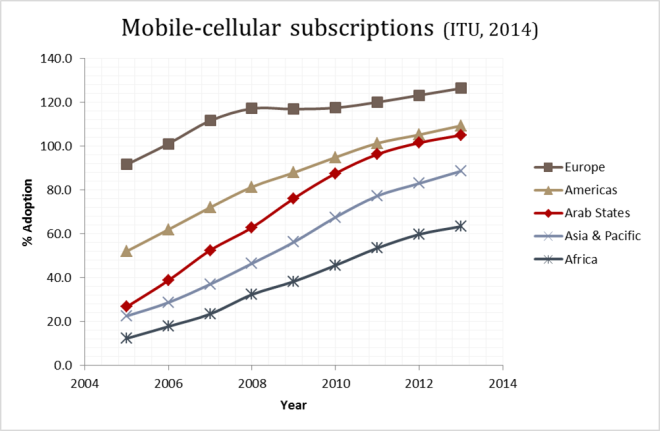 Paper Review
Paper Review
Diffusion – or delusion?
Challenging an IS research tradition
This paper (McMaster & Wastell, 2005) discusses the concept of ‘diffusionism’, which was originally introduced by Rogers (1962) to describe the processes of technology transfer and adoption by individuals, states or countries. Diffusionism has influenced the way of thinking in western societies in almost all fields, and is considered as a moral justification for the colonialist exploitation.
Starting by a brief explanation of the Rogers model, following by historical mention of the colonization, the idea of European superiority and its supporting arguments, the authors tested the applicability of these arguments on a case study in information systems, and concluded that the diffusionism theory does not depend on a scientific basis and has no empirical validation.
Diffusionism is basically built on the idea of two poles; the “inside” or the center of innovation, with its all positive characteristics, and the “outside” or the recipient community (negative), and how knowledge is transferred from in to out. It also considers the adoption process to be always positive.
The paper reflects a deep knowledge in innovation-related studies, as well as in history. I agree with the authors on their dismissive attitude against colonization and the idea of superiority of a race or group of people over others just because of their race or origin, they have proved this by means of historical facts and also by their case study and applying the ‘diffusionism’ arguments on it, which was quite logical.
Furthermore, I totally agree with their statement that “trust and mutual respect” is the best alternative for the “colonial exploitation”.
On the other hand, the paper has some weaknesses; besides being long and full of repetitive and complicated vocabulary, the authors concludes the invalidity of Rogers model completely, although it has some logical and realistic aspects; especially when it comes to the mechanism of technology adoption in the community; the S-curve specifically, which can be statistically proven (as shown in the following chart of Mobile Phone Adoption (ITU, 2014)). Moreover, the authors did not provide a full alternative model for describing the technology adoption and innovation transfer processes.
At some points, both Rogers and his critics are right; for instance when talking about the westerners leadership of innovation in the world – which is very clear nowadays and in the last centuries, and it has its logical justifications – Rogers model is similar to a zoomed-in time scale, while the critics point of view; “This lead over others is largely an accident of history, and likely to be a temporary one” can be considered as a large zoomed-out view of the time scale.
As a conclusion I can say that this is a worth-reading paper, that scientifically disproves the racist claims of the superiority of a group of people over others, and has a clear point of view regarding the innovation origins, exactly similar to that of Disney-Pixar Ratatouille Movie:
“In the past, I have made no secret of my disdain for Chef Gusteau’s famous motto, “Anyone can cook.” But I realize, only now do I truly understand what he meant. Not everyone can become a great artist; but a great artist *can* come from *anywhere*” (Ratatouille, 2007).
Bibliography
Buchanan, Mark, 2007. The Social Atom. 1st ed. New York: Bloomsbury USA.
ITU, International Telecommunication Union, 2014. Aggregate Data, the key 2005-2014 ICT data for the world. [Online] Available at: http://www.itu.int/en/ITU-D/Statistics/Pages/stat/default.aspx [Accessed 15 January 2015].
McMaster, T. & Wastell, D., 2005. Diffusion – or delusion? Challenging an IS research tradition. Information Technology & People, Vol. 18(No. 4), pp. 383-404.
Ratatouille. 2007. [Film] Directed by Jan Pinkava & Brad Bird. USA: PIXAR and Disney.
Rogers, Everett M., 1962. Diffusion of innovations. 3rd ed. New York: The Free Press, Macmillan Publishing Co., Inc.

